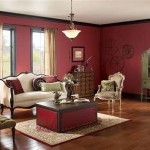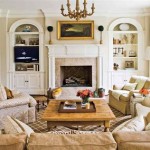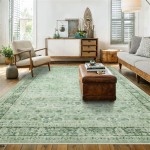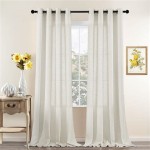Warm Color Schemes For Living Rooms: A Comprehensive Guide
The living room serves as the heart of the home, a space for relaxation, entertainment, and social gathering. The colors employed in this room significantly impact its ambiance and the emotions it evokes. Warm color schemes, characterized by hues like reds, oranges, yellows, and browns, offer a welcoming and comforting atmosphere. When judiciously applied, these colors can transform a living room into a cozy and inviting haven.
This article provides a comprehensive exploration of utilizing warm color schemes in living rooms, examining various approaches, complementary elements, and design considerations to achieve a harmonious and aesthetically pleasing space. It delves into the nuances of specific warm colors and their psychological effects, offering practical guidance for incorporating them effectively.
Understanding the Psychology of Warm Colors
Warm colors, rooted in the visual spectrum between red and yellow, are generally associated with feelings of warmth, comfort, energy, and optimism. They tend to advance visually, making rooms feel cozier and more intimate. The specific psychological impact, however, varies depending on the intensity and saturation of the color. For instance, a deep, saturated red can evoke passion and excitement, while a muted terracotta creates a more grounding and earthy feel. Yellow, in its brighter forms, is often linked to happiness and vitality, whereas a golden yellow offers a sense of sophistication and elegance. Orange, a blend of red and yellow, combines these attributes, presenting a cheerful and stimulating ambiance. Understanding these psychological nuances is crucial for selecting the appropriate warm color palette for a living room, ensuring it aligns with the desired mood and function of the space.
The impact of warm colors extends beyond mere aesthetics; research in environmental psychology suggests that color significantly influences human behavior and well-being. Exposure to warm colors can increase heart rate and blood pressure slightly, potentially making a room feel more lively and engaging. However, excessive use of intense warm colors can also be overwhelming, leading to feelings of agitation or restlessness. Therefore, balance and moderation are key principles to consider when designing with warm colors.
Furthermore, the cultural significance of warm colors varies across different regions. In some cultures, red represents luck and prosperity, while in others, it may be associated with danger or warning. These cultural nuances should be considered when designing for a diverse audience or when aiming to create a specific cultural aesthetic within the living room.
Exploring Different Warm Color Palettes
The possibilities for creating a warm color palette in a living room are diverse and multifaceted. Several distinct approaches can be taken, each offering a unique aesthetic and evoking a particular feeling. Monochromatic schemes, using variations of a single warm color, offer a cohesive and sophisticated look. For example, a living room could be designed using different shades of terracotta, ranging from a light, airy blush on the walls to a deep, earthy rust on the furniture. This approach creates a sense of harmony and visual flow.
Analogous color schemes, employing colors that are adjacent to each other on the color wheel, such as red, orange, and yellow, create a vibrant and harmonious atmosphere. This palette can be particularly effective in creating a sense of energy and excitement. However, care should be taken to balance the intensity of the colors to avoid overwhelming the space. A common approach involves selecting one dominant color and using the others as accents.
Complementary color schemes, pairing warm colors with their opposites on the color wheel (e.g., red and green, orange and blue, yellow and purple), create a dynamic and visually stimulating contrast. This approach requires careful consideration of the proportions and intensities of the colors to avoid a jarring effect. For example, a living room with warm, earthy walls could benefit from accents of turquoise or teal to create a balanced and inviting atmosphere. The cool tones provide a counterpoint to the warmth, preventing the room from feeling overly heavy or monotonous.
Triadic color schemes, using three colors that are equally spaced on the color wheel, offer a more complex and vibrant palette. For instance, a combination of red, yellow, and blue can be used to create a dynamic and engaging space. This approach requires careful balancing of the colors to avoid creating a chaotic or overwhelming effect. One color is typically chosen as the dominant hue, while the others are used as accents to add visual interest.
Integrating Warm Colors with Interior Design Elements
The successful implementation of a warm color scheme in a living room extends beyond just the wall color. It involves carefully integrating the chosen palette with other interior design elements, such as furniture, flooring, textiles, and accessories. The interplay between these elements is crucial for creating a cohesive and harmonious space.
Furniture plays a significant role in defining the overall aesthetic of the living room. Warm-toned wooden furniture, such as oak, mahogany, or walnut, complements warm color schemes beautifully, adding to the sense of comfort and naturalness. Upholstery in warm shades of cream, beige, brown, or even muted reds or oranges can further enhance the cozy atmosphere. When selecting furniture, it is important to consider the scale and proportion of the pieces in relation to the size of the room. Overly bulky furniture can make a small living room feel cramped, while undersized pieces can get lost in a larger space.
Flooring materials significantly contribute to the overall warmth and texture of the room. Hardwood floors, especially those with warm undertones, are an excellent choice for complementing warm color schemes. Area rugs in corresponding warm colors, patterns, or textures can add further visual interest and comfort. Alternatively, carpeting in warm shades of beige, brown, or even muted reds can provide a soft and inviting feel underfoot. The choice of flooring material should also consider practicality and durability, especially in high-traffic areas.
Textiles, including curtains, cushions, throws, and blankets, offer opportunities to introduce additional warmth and texture into the living room. Linen, cotton, wool, and velvet are all excellent choices for creating a cozy and inviting atmosphere. These can be solid colors, patterns, or textures, adding another layer of depth to the overall design. Consider using textured fabrics like corduroy or velvet to enhance the tactile experience of the room. Curtains made from heavy fabrics can help to insulate the room and create a sense of privacy, while lighter fabrics can allow more natural light to filter through.
Accessories, such as artwork, lamps, vases, and decorative objects, can be used to add pops of color and personality to the living room. These can be carefully selected to complement the overall warm color scheme or to provide contrasting accents that add visual interest. Metallic accents, such as gold or brass, can add a touch of elegance and sophistication. Plants can also be used to bring life and vibrancy to the space, adding a natural element that complements the warm color palette. Carefully curated accessories can transform a living room from a functional space into a personalized and inviting haven.
Lighting is a critical element in any interior design scheme, and it plays a particularly important role in accentuating warm colors. Warm-toned lighting, such as incandescent or halogen bulbs, can enhance the cozy and inviting atmosphere. Layered lighting, including ambient, task, and accent lighting, can create depth and dimension in the room. Dimmers can also be used to adjust the intensity of the lighting, allowing for flexibility in creating different moods and atmospheres. Natural light is also crucial for enhancing the vibrancy of warm colors. Maximizing natural light through the use of large windows or skylights can significantly improve the overall ambiance of the living room.

Living Room Colors And Decor In Warm Earth Tones Cozy Color Palettes For A Comfy Small Space

43 Cozy And Warm Color Schemes For Your Living Room

Comfy Living Room Ideas In Warm Cozy Colors Pictures And Paint Color
:strip_icc()/101309174-0eb0530d7f724f17a9874021f7b49d81.jpg?strip=all)
31 Warm Color Palettes For Every Room In The House

17 Living Room Color Palettes Our Designers Love Havenly Interior Design Blog

43 Cozy And Warm Color Schemes For Your Living Room
:strip_icc()/101351435-0cb13132856646c3bf6abac40c2b0b9d.jpg?strip=all)
31 Warm Color Palettes For Every Room In The House

17 Living Room Color Palettes Our Designers Love Havenly Interior Design Blog

15 Warm Paint Colors To Cozy Up Your Home

31 Warm Color Palettes For Every Room In The House








